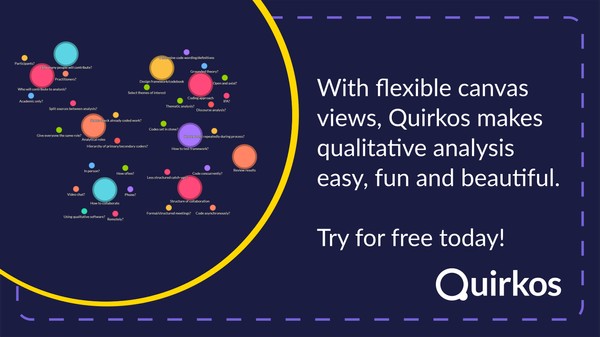Interviews are a cornerstone of qualitative research. Many studies mention conducting in-depth, semi-structured interviews, but what does this truly entail? This guide delves into creating effective interview guides for qualitative research, providing practical tips and examples to enhance your data collection process.
Understanding In-Depth Qualitative Interviews
An “in-depth” qualitative interview typically involves a one-on-one conversation focusing on a specific topic, explored with considerable detail. While the duration usually hovers around an hour, it can vary depending on the research objectives and participant responses. Sociologist Burgess (2002) aptly describes these interviews as “conversations with a purpose,” highlighting the structured nature of the interaction despite its conversational feel.
Qualitative Interviews vs. Quantitative Surveys
Unlike quantitative surveys with fixed questions, qualitative interviews aim for detailed, nuanced responses. They acknowledge the absence of a “one-size-fits-all” approach, especially when eliciting personal narratives. While flexibility is key, MacNamara (2009) emphasizes the importance of ensuring that “the same general areas of information are collected from each interviewee” to maintain focus and comparability across interviews.
Types of Qualitative Interviews
Turner (2010) identifies three primary types of qualitative interviews:
- Informal Conversation (Unstructured): A free-flowing discussion without pre-determined questions.
- General Interview Guide (Semi-structured): Utilizes a guide with topics and questions but allows for flexibility.
- Standardized Open-Ended (Structured): Follows a strict set of open-ended questions.
This guide will concentrate on the “interview guide” approach, striking a balance between structure and flexibility.
What is a Qualitative Interview Guide?
An interview guide serves as a “cheat-sheet” for the interviewer, containing a list of questions and topics to be covered. However, it’s not a rigid script. Silverman (2013) notes that interviewers typically have prepared questions but can deviate from the guide, exploring unexpected yet relevant areas or skipping sections that don’t apply to the participant.
Examples of Semi-Structured Interview Guides
Finding examples of interview guides in published research can be challenging. They generally consist of a list of short questions and follow-up prompts, grouped by topic, typically numbering around a dozen.
Example Question Set for Qualitative Interviews
Consider the example from the Qualitative Researcher Journeys project, an open-source dataset featuring real qualitative interviews. Example questions include:
- What kind of researcher are you?
- In what ways has that changed since you started your career?
- What was your first piece of qualitative research about?
- What did you learn from doing that?
- What’s your favourite methodological approach?
- Have you ever taught qualitative research?
- To whom did/do you teach qualitative research?
- Which aspects did/do you teach?
- What did/do you most enjoy about it?
How to Write a Semi-Structured Interview Guide: Top Tips
Creating a robust interview guide requires careful planning and consideration. Here are essential tips:
-
Align Questions with Research Questions and Respondent Understanding:
Ensure that your questions are open-ended, address your research questions, and are phrased in a way that resonates with your respondents. Avoid jargon and complex language unless your participants are experts in the field. Questions should be non-leading to avoid influencing responses.
-
Link Questions to Analytical Approach:
Consider how the questions will facilitate your chosen method of analysis. For narrative analysis, encourage storytelling. For Interpretative Phenomenological Analysis (IPA), focus on participants’ interpretations of their experiences.
-
Include Optional Follow-Up Questions with Prompt Words:
Incorporate prompt words to remind you of potential areas for deeper exploration. For example, “When did you first visit the doctor?” could include prompts like “Why then?”, “Were you afraid?”, or “Who went with you?”.
-
Maintain Flexibility in Question Order:
Group questions by topic but be prepared to adjust the order based on the flow of the conversation. Active listening is crucial for seamlessly transitioning between topics.
 Qualitative Research Interview
Qualitative Research InterviewAlternative Text: A visually engaging interface of qualitative analysis software Quirkos, highlighting its flexible canvas views for easy, fun, and beautiful research analysis.
-
Know the Interview Guide Thoroughly:
Familiarize yourself with the guide to the point where you can recall all the questions and topics without relying on it heavily. This allows for a more natural and conversational interview.
-
Foster Natural Conversation:
Strive for a relaxed, non-combative atmosphere. Start with easy questions to ease the participant into the interview. Engage in active listening, and respond to their inquiries appropriately.
-
Seek Feedback from Research Team or Supervisors:
Share your interview guide with colleagues or supervisors for feedback and suggestions. Seasoned interviewers can offer valuable insights on question wording and structure.
-
Adapt the Guide Based on Data Collection:
Revise your interview guide as you collect data, noting any changes made and which respondents were interviewed with each version. This allows you to address emerging themes and refine your approach.
-
Time Your Questions and Prioritize Accordingly:
Estimate the time required to ask and answer each question, and prioritize them accordingly. Ensure you have enough questions to gather sufficient detail while also having lower-priority questions that can be dropped if time is limited.
Conclusion
Crafting an effective interview guide is crucial for successful qualitative research. By following these tips, you can create a flexible yet structured tool that will help you gather rich, meaningful data. Remember to treat the guide as a guide, not a rigid script, and embrace the dynamic nature of qualitative interviewing. With practice, you’ll develop the skills to navigate the interview process effectively and extract valuable insights from your participants.